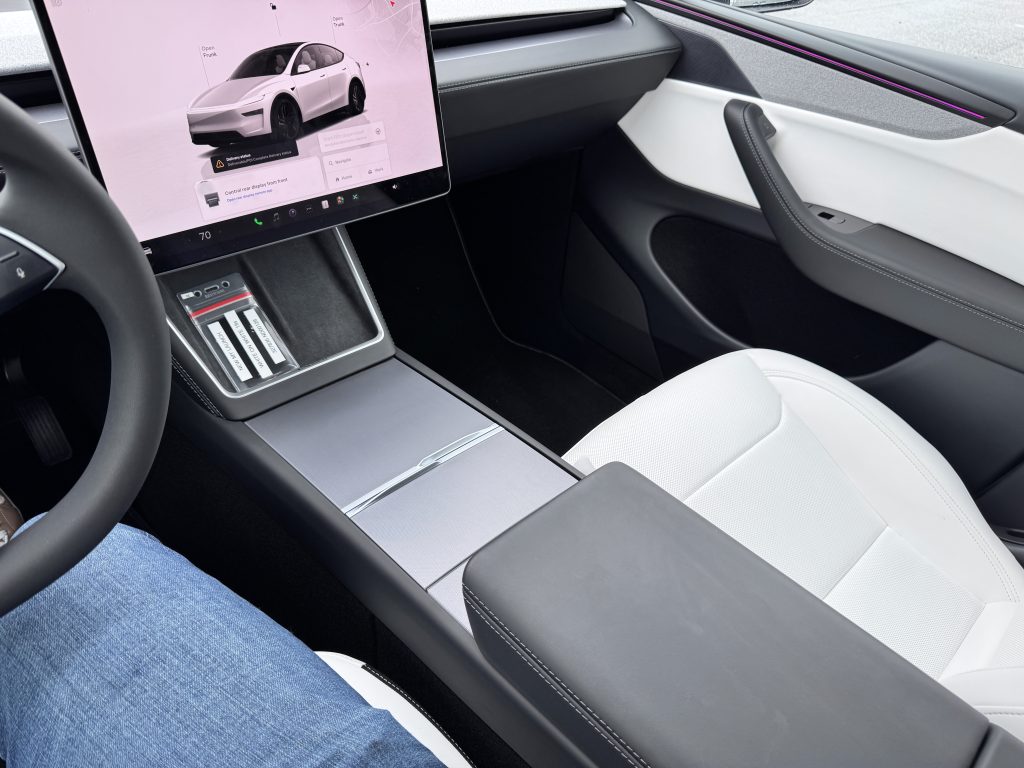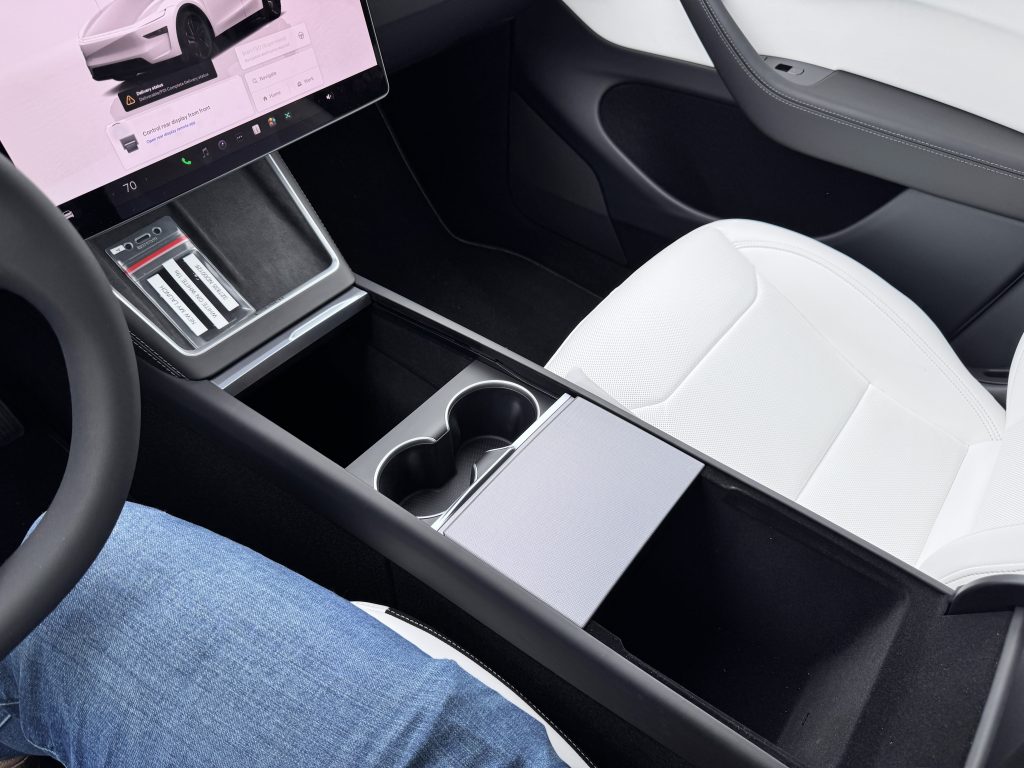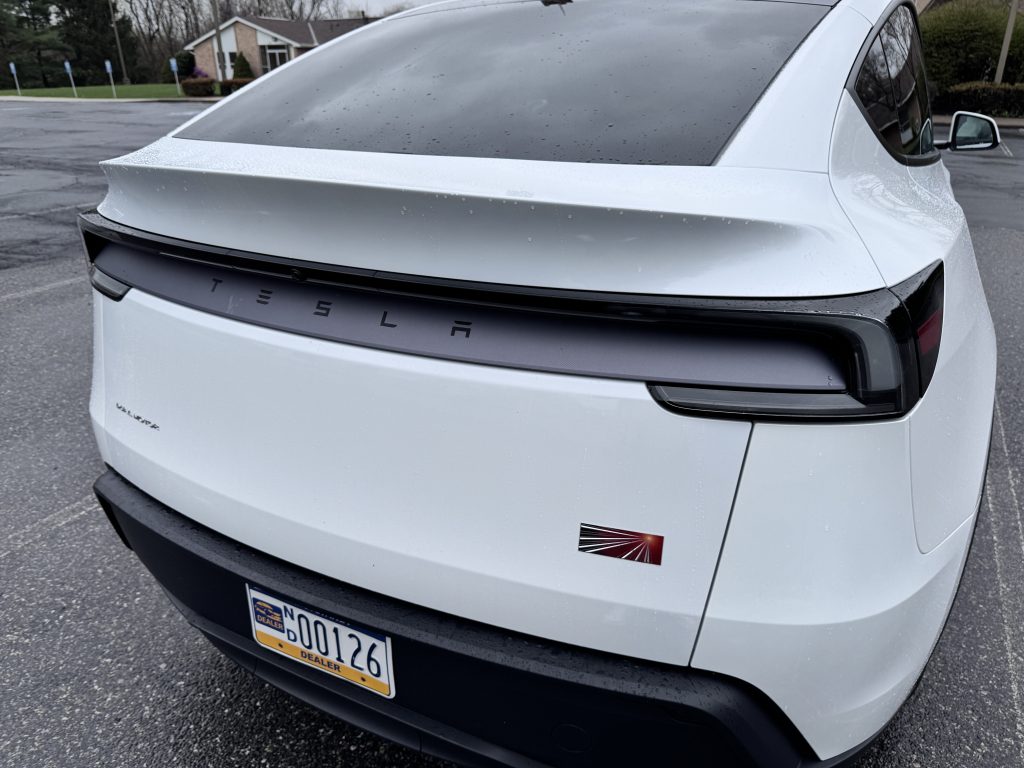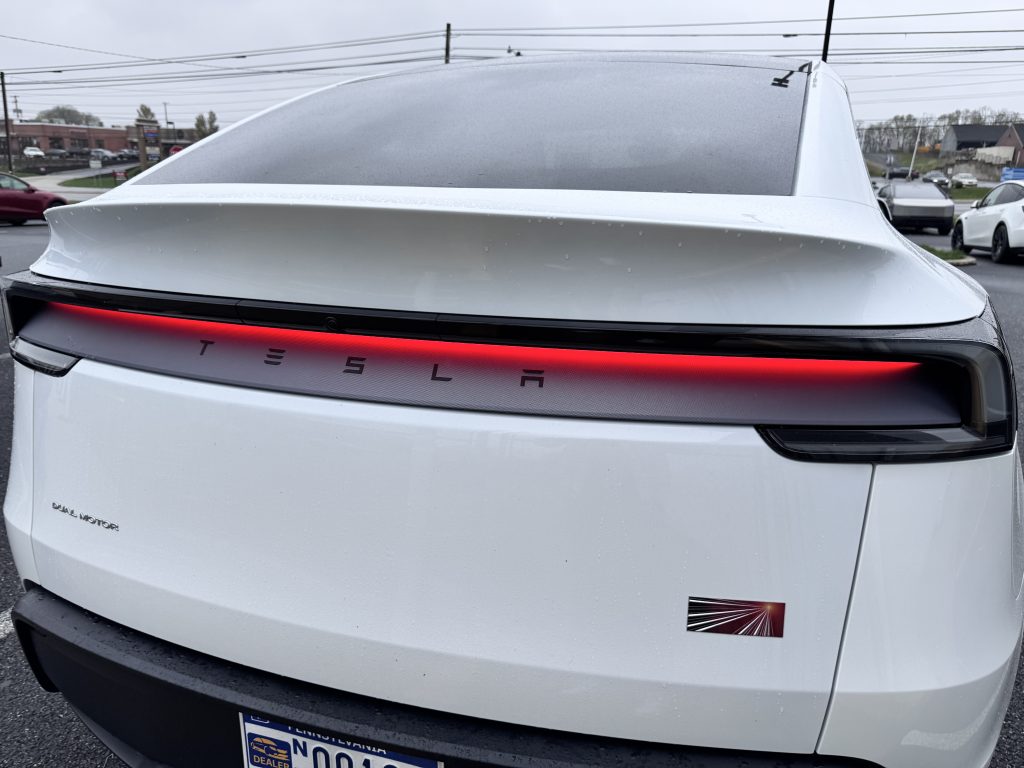News
I took a Tesla new Model Y Demo Drive – Here’s what I learned
The new Tesla Model Y has plenty of improvements that make it much better than its past version.
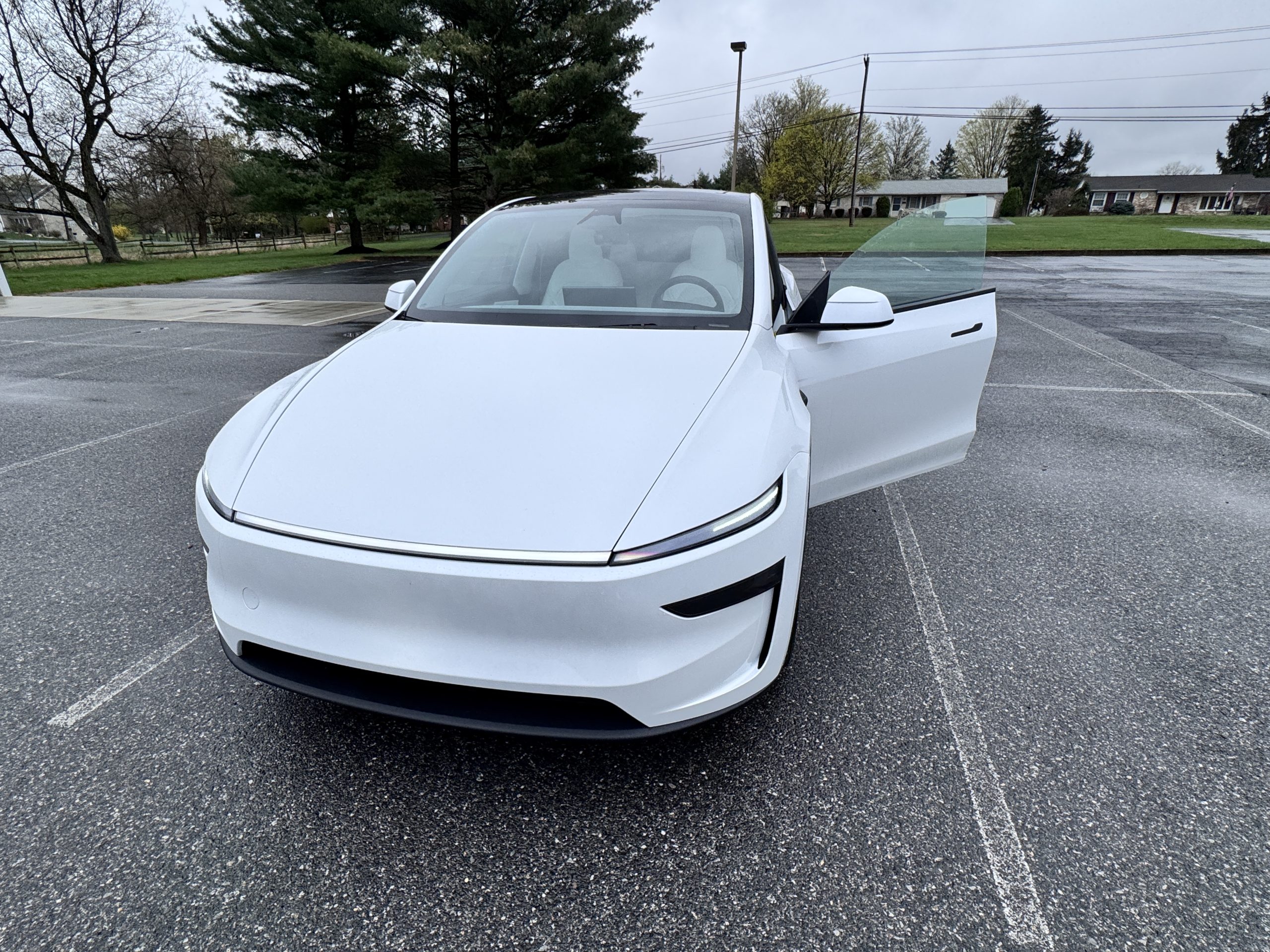
As the new Tesla Model Y arrived at a local showroom for Demo Drives, I swiftly signed up for one to compare the legacy model to what the company is hoping is an even better version of its best-selling vehicle. Coming off of a Legacy Model Y Demo Drive just two months ago, as I was planning to buy one, I had a good understanding of what was improved and what was not.
To make a long story short, I’m really happy I did not pull the trigger on the Legacy Model Y in February. The new Tesla Model Y is truly a much-improved version of what was already a great vehicle, and while I still think the Cybertruck is the best vehicle in Tesla’s lineup, the new ‘Juniper’ is right up there with it.
First Impressions
The first thing I really took note of was the massively changed exterior. The addition of the light bar on the front and the taillight bar that glows were two modernized designs that Tesla chose to implement on this vehicle.
While I never disliked the look of the Legacy Model Y, this is simply better. It’s more modern, slightly cleaner, and truly starts to give off the vibes of the Cybercab, which Tesla unveiled in October 2024.
Overall, the vehicle, in terms of dimensions, is not incredibly different from the past version. The look is really what changed here, and in my opinion, it’s for the better.

Fit and finish were really great. A quick inspection showed the car had been put together very well, and the Sales Advisor, who recently took a trip to Gigafactory Texas and viewed the new Model Y line, said Tesla has been really paying attention to the condition of these vehicles as they leave the factory.
Tesla had a very distinct focus on eliminating excessive panel gaps and aesthetic issues before they leave the factory.
Interior Changes and Higher Quality Materials
In the past, I’ve been sort of hesitant to buy Teslas because, for $35,000+, I felt like some of the interior parts were cheap. Most notably, the sliders above the storage and cupholders and the center console were things I felt should be of higher quality.
This was a big improvement. All of the compartment doors and covers felt much better in terms of overall quality. Nothing was creaky or cheap feeling, and paying $41,000 for a car (after tax credit) should come with materials that are a much better quality.
The steering wheel had a good shape, and the bottom portion of it being flat was not anything crazy, but it was nice.
My favorite tidbit of information was regarding the ambient lighting. Tesla did not run it as far back on the doors in the new Model Y as it did in the Model 3 Highland. Also, many owners apparently complained about the reflection of the ambient lighting on the windshield when they were driving.
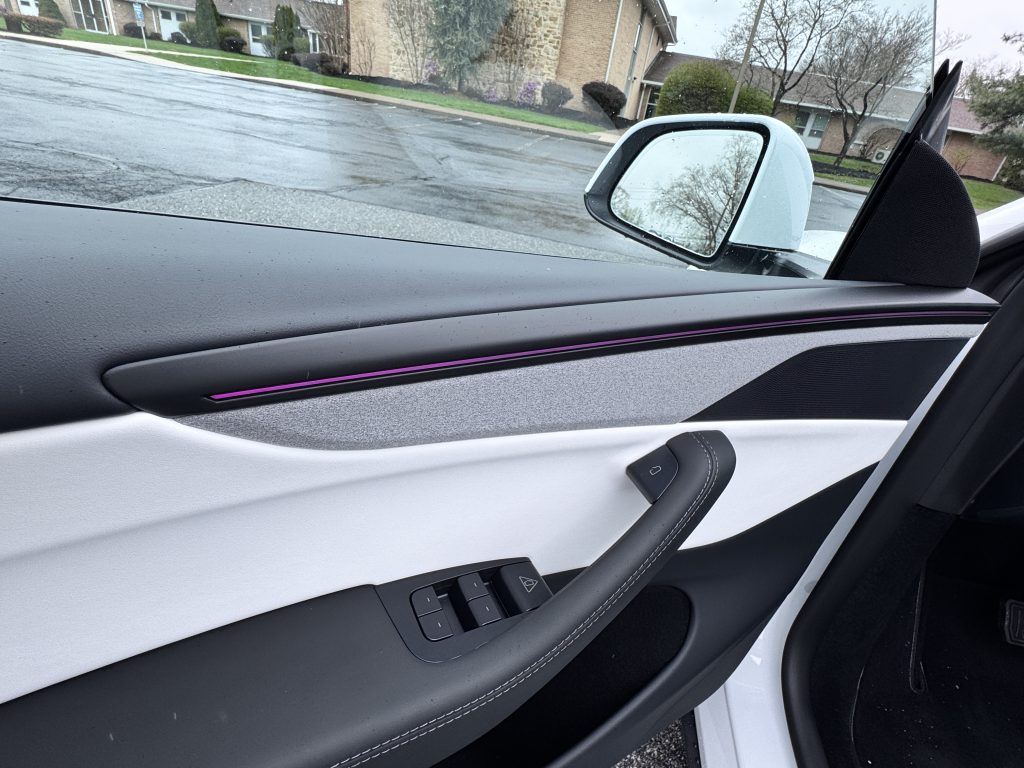
Tesla fixed this by covering the ambient lighting and pushing it into a nook that was designed for the lights specifically. There is no longer any reflection of the ambient lighting on the windshield, so it’s important to note that Tesla didn’t take the Highland interior and put it right inside the new Y.
Suspension Improvements Were the Best Part
By far, my favorite fixes were the suspension improvements. While the fixes to overall interior quality and the look are great, the feel when driving the car is truly more important.
The Model 3 Highland had a really great improvement from its past iteration, as I was able to test it with some spirited driving on Pennsylvania backroads. I felt the same way about the new Model Y. You can truly feel a lot of the things Tesla did to make the ride more comfortable in the new version of the crossover.
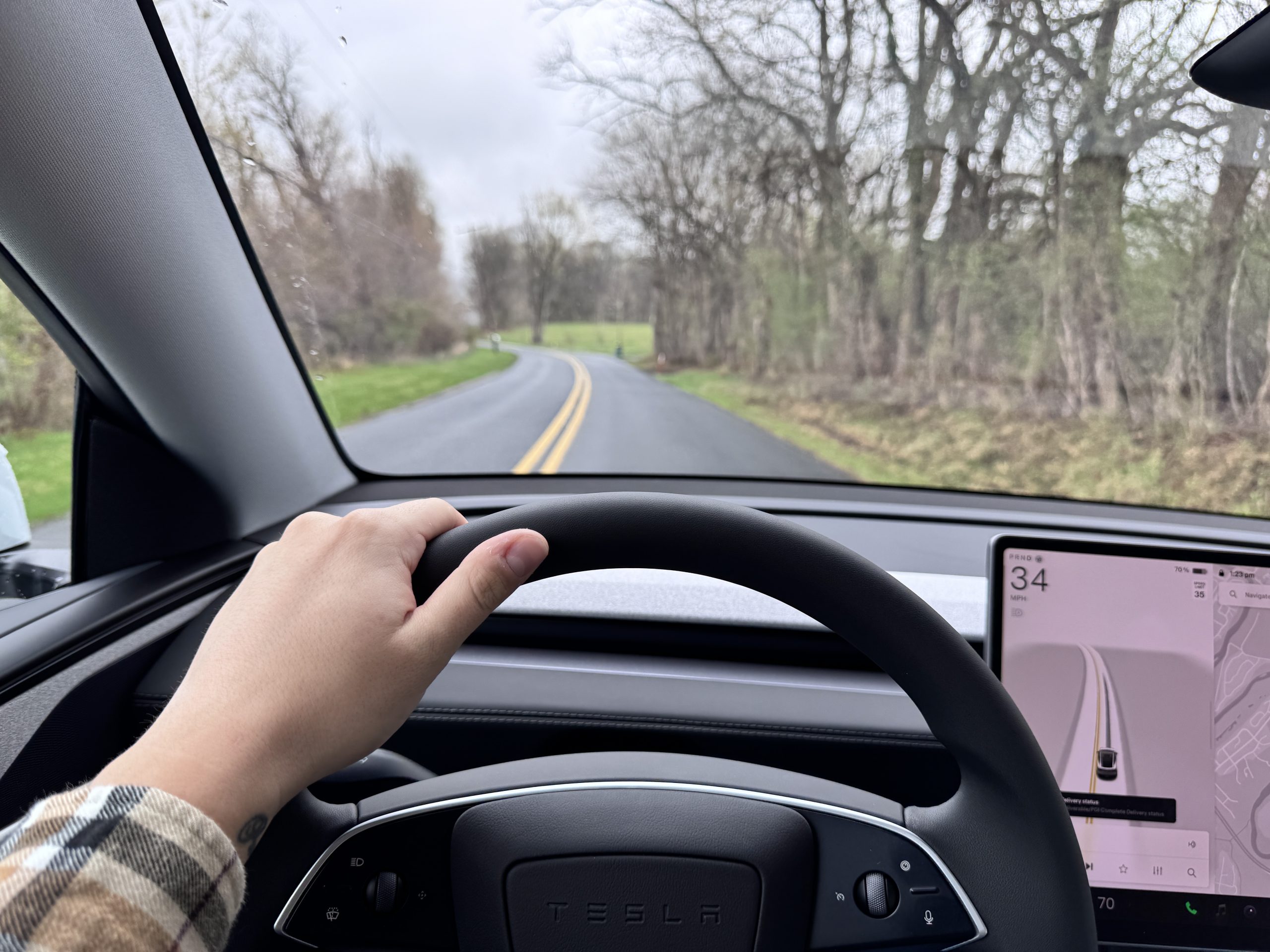
The ride feels solid but not rigid. It handles things like bumps, potholes, and other inconsistencies really well. It was never uncomfortable; it felt very sporty and responsive and hugged tight corners at higher speeds.
Room and Comfort
The vehicle was very spacious, and I had a lot of legroom in the back. I also liked the feel of the driver’s seat, and I felt like I was sitting in the cockpit of something sportier than a crossover. It was really very nice, and the seats seemed to hug you.
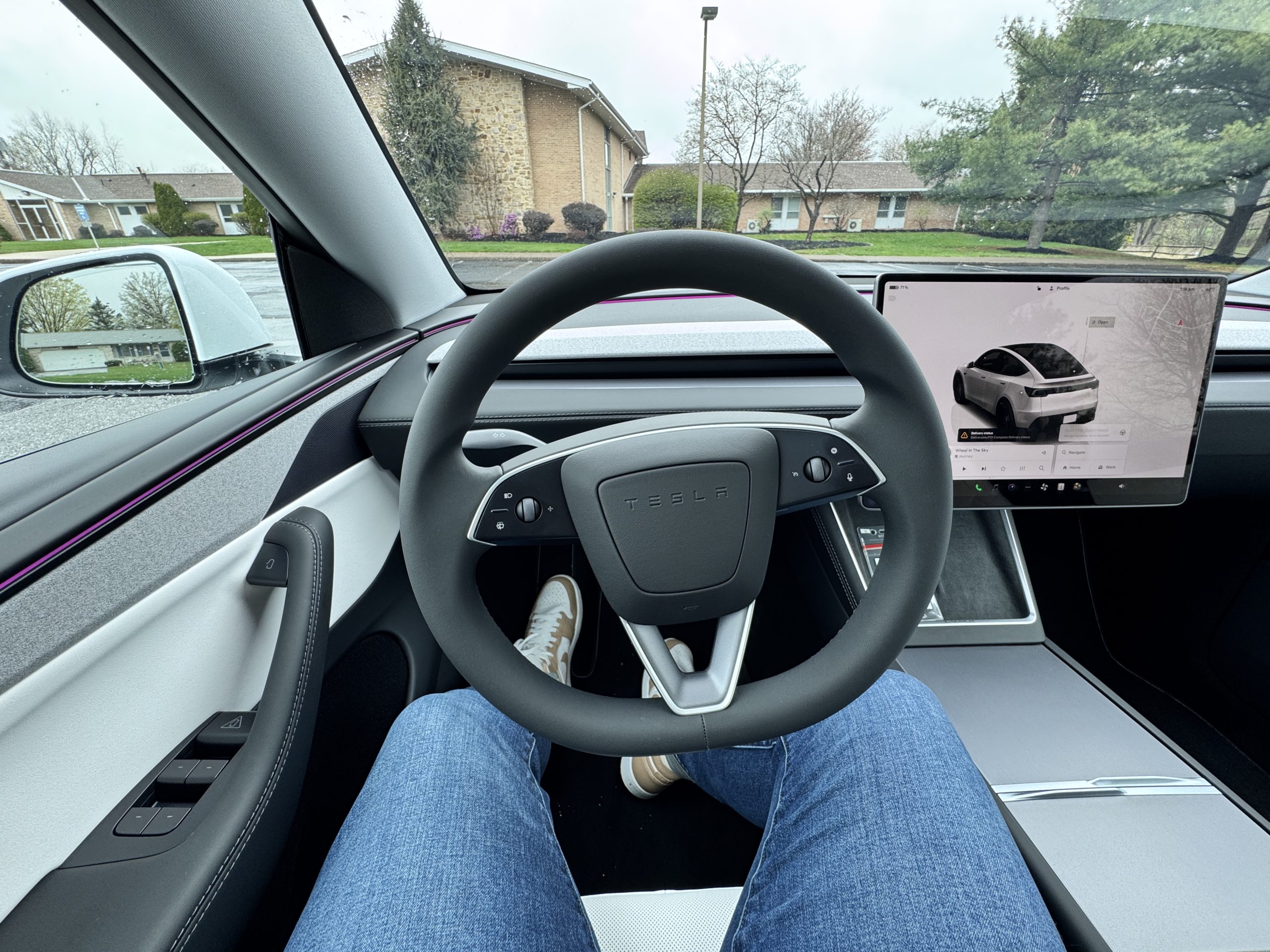
As far as the rear, it felt spacious and comfortable, and I wouldn’t worry about being stuck back there on a road trip that was 6-7 hours long.
The rear seats are heated, but the middle seat is not. The rear screen also gives occupants in the back of the car something to do, and Tesla even enabled multiple Bluetooth headsets the ability to connect to that center screen.
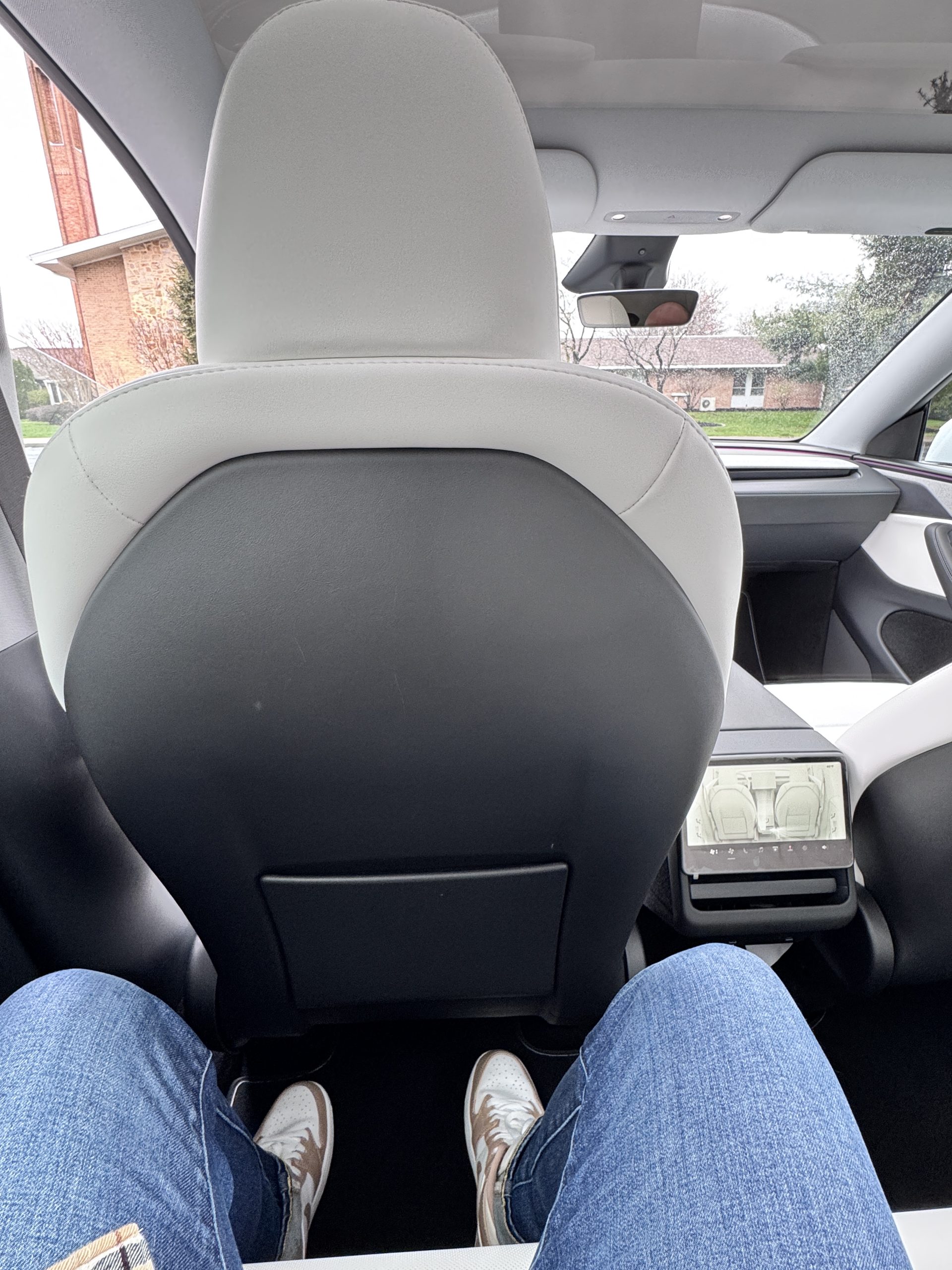
Other Tidbits
The small improvements from the new Model 3 are what really make the Model Y a great car. The previously mentioned ambient lighting fix is something that is great.
One other thing I really liked was that the trunk privacy cover now has a dedicated storage area, which is seen in the indentations here:
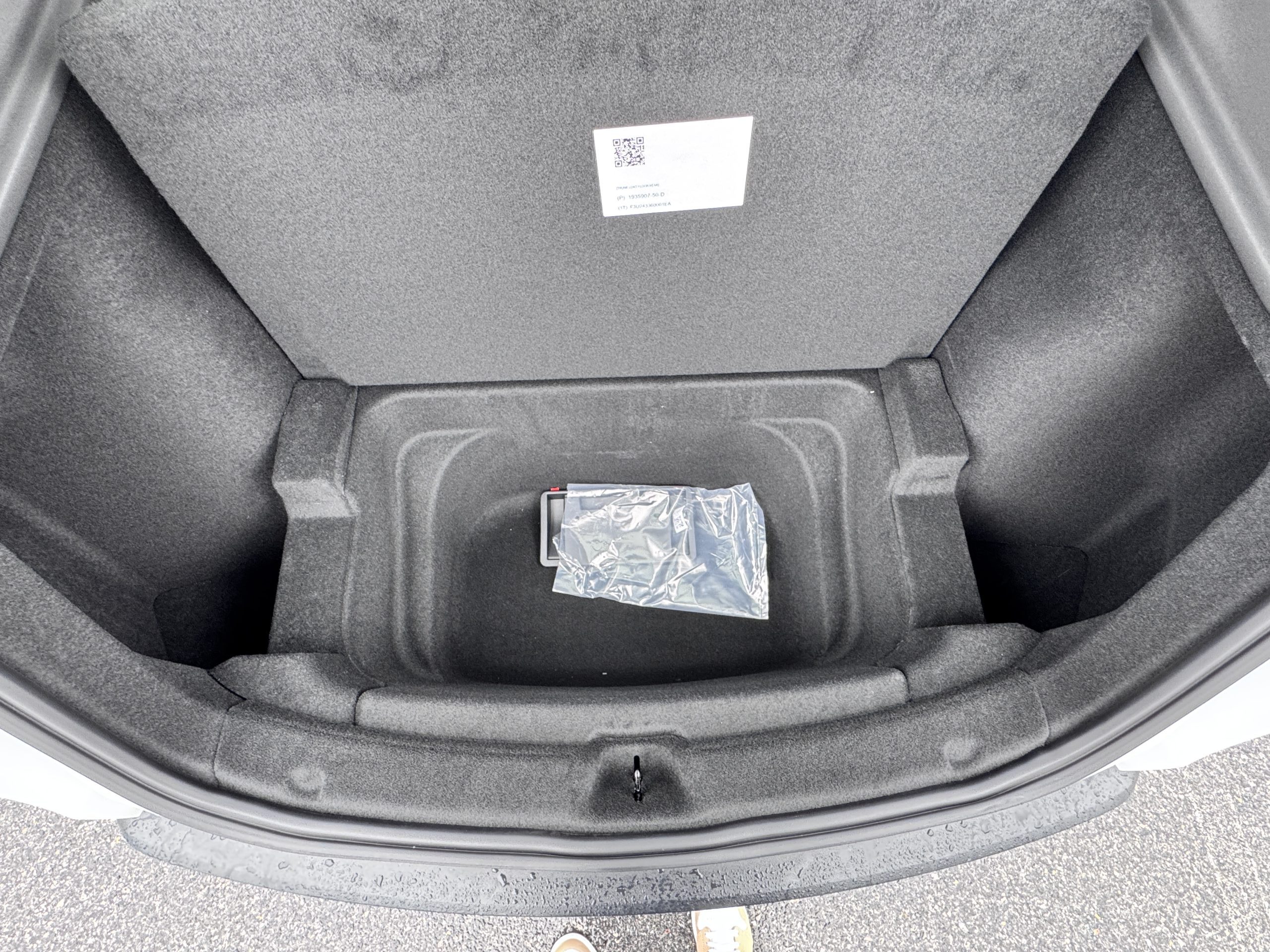
The trunk cover can be folded and removed and placed in those indentations, as opposed to sitting on floor of the trunk, potentially being bent and damaged by whatever you have back there.
This was one thing that was a nice touch.
Final Thoughts
All in all, I was very impressed with the new Model Y. It is undoubtedly better than what Tesla previously offered, and that car was the best-selling vehicle globally for two straight years. I would not be surprised to see many Legacy Model Y owners trade their cars in for this new version.
- The new Tesla Model Y taillight with no light
- The new Tesla Model Y taillight with taillight glow
There’s something to be said about a car that fits functionality and fun. The crossover design is popular because it offers so much more space than a sedan but is not the size of a massive, full-sized SUV.
The way this car drives is more like a sedan than a crossover, though, and how the suspension improvements really shine through is where this car is excellent and matches both the wants and needs of many.
While the Cybertruck is still my favorite Tesla to drive, the new Model Y is more accessible to more people and it truly was an awesome experience getting to run around in it for an afternoon.

Elon Musk
Delaware Supreme Court reinstates Elon Musk’s 2018 Tesla CEO pay package
The unanimous decision criticized the prior total rescission as “improper and inequitable,” arguing that it left Musk uncompensated for six years of transformative leadership at Tesla.

The Delaware Supreme Court has overturned a lower court ruling, reinstating Elon Musk’s 2018 compensation package originally valued at $56 billion but now worth approximately $139 billion due to Tesla’s soaring stock price.
The unanimous decision criticized the prior total rescission as “improper and inequitable,” arguing that it left Musk uncompensated for six years of transformative leadership at Tesla. Musk quickly celebrated the outcome on X, stating that he felt “vindicated.” He also shared his gratitude to TSLA shareholders.
Delaware Supreme Court makes a decision
In a 49-page ruling Friday, the Delaware Supreme Court reversed Chancellor Kathaleen McCormick’s 2024 decision that voided the 2018 package over alleged board conflicts and inadequate shareholder disclosures. The high court acknowledged varying views on liability but agreed rescission was excessive, stating it “leaves Musk uncompensated for his time and efforts over a period of six years.”
The 2018 plan granted Musk options on about 304 million shares upon hitting aggressive milestones, all of which were achieved ahead of time. Shareholders overwhelmingly approved it initially in 2018 and ratified it once again in 2024 after the Delaware lower court struck it down. The case against Musk’s 2018 pay package was filed by plaintiff Richard Tornetta, who held just nine shares when the compensation plan was approved.
A hard-fought victory
As noted in a Reuters report, Tesla’s win avoids a potential $26 billion earnings hit from replacing the award at current prices. Tesla, now Texas-incorporated, had hedged with interim plans, including a November 2025 shareholder-approved package potentially worth $878 billion tied to Robotaxi and Optimus goals and other extremely aggressive operational milestones.
The saga surrounding Elon Musk’s 2018 pay package ultimately damaged Delaware’s corporate appeal, prompting a number of high-profile firms, such as Dropbox, Roblox, Trade Desk, and Coinbase, to follow Tesla’s exodus out of the state. What added more fuel to the issue was the fact that Tornetta’s legal team, following the lower court’s 2024 decision, demanded a fee request of more than $5.1 billion worth of TSLA stock, which was equal to an hourly rate of over $200,000.
Delaware Supreme Court Elon Musk 2018 Pay Package by Simon Alvarez
News
Tesla Cybercab tests are going on overdrive with production-ready units
Tesla is ramping its real-world tests of the Cybercab, with multiple sightings of the vehicle being reported across social media this week.

Tesla is ramping its real-world tests of the Cybercab, with multiple sightings of the autonomous two-seater being reported across social media this week. Based on videos of the vehicle that have been shared online, it appears that Cybercab tests are underway across multiple states.
Recent Cybercab sightings
Reports of Cybercab tests have ramped this week, with a vehicle that looked like a production-ready prototype being spotted at Apple’s Visitor Center in California. The vehicle in this sighting was interesting as it was equipped with a steering wheel. The vehicle also featured some changes to the design of its brake lights.
The Cybercab was also filmed testing at the Fremont factory’s test track, which also seemed to involve a vehicle that looked production-ready. This also seemed to be the case for a Cybercab that was spotted in Austin, Texas, which happened to be undergoing real-world tests. Overall, these sightings suggest that Cybercab testing is fully underway, and the vehicle is really moving towards production.
Production design all but finalized?
Recently, a near-production-ready Cybercab was showcased at Tesla’s Santana Row showroom in San Jose. The vehicle was equipped with frameless windows, dual windshield wipers, powered butterfly door struts, an extended front splitter, an updated lightbar, new wheel covers, and a license plate bracket. Interior updates include redesigned dash/door panels, refined seats with center cupholders, updated carpet, and what appeared to be improved legroom.
There seems to be a pretty good chance that the Cybercab’s design has been all but finalized, at least considering Elon Musk’s comments at the 2025 Annual Shareholder Meeting. During the event, Musk confirmed that the vehicle will enter production around April 2026, and its production targets will be quite ambitious.
News
Tesla gets a win in Sweden as union withdraws potentially “illegal” blockade
As per recent reports, the Vision union’s planned anti-Tesla action might have been illegal.

Swedish union Vision has withdrawn its sympathy blockade against Tesla’s planned service center and showroom in Kalmar. As per recent reports, the Vision union’s planned anti-Tesla action might have been illegal.
Vision’s decision to pull the blockade
Vision announced the blockade in early December, stating that it was targeting the administrative handling of Tesla’s facility permits in Kalmar municipality. The sympathy measure was expected to start Monday, but was formally withdrawn via documents sent to the Mediation Institute and Kalmar Municipality last week.
As noted in a Daggers Arbete report, plans for the strike were ultimately pulled after employer group SKR highlighted potential illegality under the Public Employment Act. Vision stressed its continued backing for the Swedish labor model, though Deputy negotiation manager Oskar Pettersson explained that the Vision union and IF Metall made the decision to cancel the planned strike together.
“We will not continue to challenge the regulations,” Petterson said. “The objection was of a technical nature. We made the assessment together with IF Metall that we were not in a position to challenge the legal assessment of whether we could take this particular action against Tesla. Therefore, we chose to revoke the notice itself.”
The SKR’s warning
Petterson also stated that SKR’s technical objection to the Vision union’s planned anti-Tesla strike framed the protest as an unauthorized act. “It was a legal assessment of the situation. Both for us and for IF Metall, it is important to be clear that we stand for the Swedish model. But we should not continue to challenge the regulations and risk getting judgments that lead nowhere in the application of the regulations,” he said.
Vision ultimately canceled its planned blockade against Tesla on December 9. With Vision’s withdrawal, few obstacles remain for Tesla’s long-planned Kalmar site. A foreign electrical firm completed work this fall, and Tesla’s Careers page currently lists a full-time service manager position based there, signaling an imminent opening.
